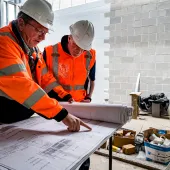Women apprentices rise, retention now key
The number of women starting construction apprenticeships has surged by more than 65% over the past five years, according to data from the Construction Industry Training Board (CITB). But with women still accounting for just 1% of site-based roles, industry leaders say retention and career progression are now the real challenge.
A new programme, Women in Construction: The Power Within Her, aims to close that gap. Co-founded by entrepreneur Michaela Wain, the initiative focuses on overlooked skills such as communication, resilience and leadership, which are seen as critical to helping women remain in the sector and progress to senior roles.
Since 2018, the number of women completing construction apprenticeships has more than doubled, from about 340 to over 930. Yet overall apprenticeship numbers in construction have dipped, making women an increasingly vital — but still fragile — source of new talent.
“Companies need to understand the benefits of having women — not just morally, but economically. A diverse team increases profitability, and in construction women still count as a diverse group,” said Wain.
The programme is already running across several colleges and employers in regions with high apprenticeship uptake, particularly in the North West. Participants describe it as transformational, with some graduates moving into supervisory roles and others leading inclusion projects on site.
For the UK concrete sector, the implications are direct: concrete contracting, precast production and formwork trades all face acute labour shortages. With government targets calling for 1.5 million new homes by 2029 and nearly 50,000 new recruits needed annually, retaining women in technical and site-based roles is increasingly critical.







